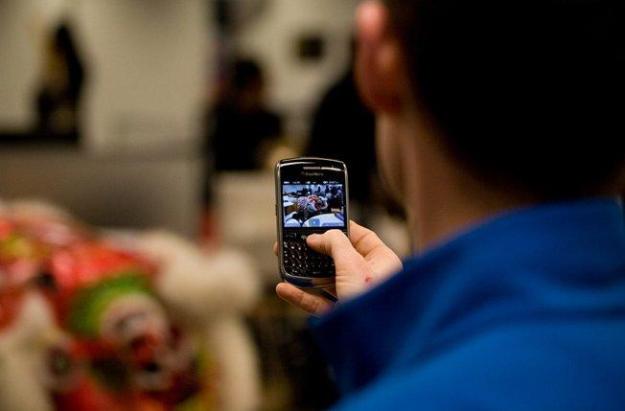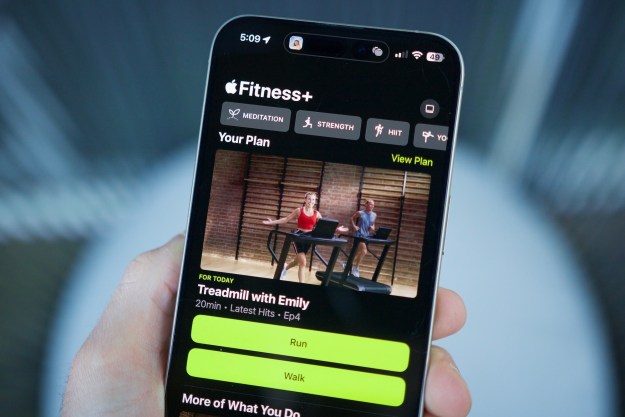 When the Associated Press misinterpreted RIM’s newly appointed chief executive Thorsten Heins in saying, “We believe BlackBerry cannot succeed if we tried to be everybody’s darling and all things to all people. Therefore, we plan to build on our strength,” the quote was immediately pounced on by the broad media as a capitulation — RIM had tried in vain to make inroads to the consumer market with its BlackBerry smartphones and tablet, and it was ready to admit defeat, to regroup, to cut its losses. It was determined not to be General Custer at Little Bighorn — it would know when to quit. Headlines such as “BlackBerry maker RIM Gives Up On Consumer Market,” and “Rim says it is pulling out of the consumer market,” flooded the Internet.
When the Associated Press misinterpreted RIM’s newly appointed chief executive Thorsten Heins in saying, “We believe BlackBerry cannot succeed if we tried to be everybody’s darling and all things to all people. Therefore, we plan to build on our strength,” the quote was immediately pounced on by the broad media as a capitulation — RIM had tried in vain to make inroads to the consumer market with its BlackBerry smartphones and tablet, and it was ready to admit defeat, to regroup, to cut its losses. It was determined not to be General Custer at Little Bighorn — it would know when to quit. Headlines such as “BlackBerry maker RIM Gives Up On Consumer Market,” and “Rim says it is pulling out of the consumer market,” flooded the Internet.
The reality is that RIM isn’t ready to give up on consumers just yet. The morning after Heins’ comments, Alec Saunders, RIM’s vice-president for developer relations, tweeted, “remarks were wrongly interpreted. We are not leaving the consumer market.”
Why then was the world so ready to accept RIM’s consumer surrender, based on the offhand remarks of a new CEO? Because we expected it.
It is in fact Heins’ full-speed ahead in the face of staggering competition that is so surprising, not that RIM may have been close to giving up on the consumer market altogether. But new information reveals that the company may have indeed been very close to doing just that.
Bold decisions
Reuters reported yesterday in an exclusive that prior to stepping down, former co-chief executive Jim Balsillie had an idea that would have fundamentally changed RIM — and that it may have lead to his resignation. Sources with direct knowledge of the plan told Reuters that Balsillie had entered into high-level talks with wireless carriers in North America to begin allowing devices other than the BlackBerry to use RIM’s famed network — a decision that would have altered the long-standing BlackBerry-only rule, immediately destroying the BlackBerry’s exclusivity, but in turn capitalizing on the only aspect of RIM’s business that still makes a healthy profit.
As Reuters reported, “The plan would have let the carriers use the RIM network to offer inexpensive data plans, limited to social media and instant messaging, to entice low-tier customers to upgrade from no-frills phones to smartphones.”
And because RIM hosts its own data centers in which carriers pay to push their wireless traffic through, it would have also allowed other devices to benefit from RIM’s world-class security encryption and network efficiency. RIM’s network services currently generate around $1 billion a quarter, as opposed to the BlackBerry hardware line, which Reuters reports “may have lost money” last year.
But the plans lead to infighting at the top of RIM’s corporate chain — perhaps between Basillie and Mike Lazaridis, RIM’s founder and other co-CEO, who currently maintains a board seat and is still actively involved in the company. The plans were eventually killed in favor of increased focus on next-generation handset hardware and software.
Hard road ahead
RIM has struggled to keep up with rivals such as Apple and Google as corporations have grown more willing to adopt those systems in direct opposition to BlackBerry, a longtime corporate favorite. RIM has been unable to make up for the losses in the consumer market. As of February, RIM’s market share in smartphones declined 3.2 percent from a month prior, representing just 13.4 percent of all devices, according to comScore — compare that to Android’s 50.1 percent and Apple’s 30.2 percent. Even Microsoft’s less than 2 year old Windows Phone Series now commands almost 4 percent of the market.
RIM has bet the future on its new BlackBerry 10 operating system, and has been actively courting developers, planning to release prototype phones to select app makers in May. But leaked screenshots of the new OS hint at a derivative system akin to a Windows Phone/Android mash-up — not exactly a revolutionary leap in smartphone interfaces. If you look at the way the smartphone market has coalesced around a few platforms in recent years, RIM’s future looks bleak. Apple has its iPhone, with a cachet, aesthetic, and enormous app market that makes it a singular device. Google has Android, a free OS with massive market penetration and the conviction of top-selling device makers — Samsung, Motorola, HTC, among others. Microsoft has virtually endless amounts of cash to throw at its fledgling Windows Phone, and its partnership with Nokia is already paying fairly stunning dividends in the Lumia 900 — not to mention that phone’s rock-bottom price of $99. With a RIM now recommitted to the competition for consumer handset love, where exactly does it see room for BlackBerry?
Editors' Recommendations
- BlackBerry trailer depicts the rise and fall of the iconic phone
- BlackBerry is better off dead
- A new BlackBerry with a keyboard is still on the schedule for 2022
- BlackBerry rises from the grave: New 5G phone with a keyboard coming in 2021
- TCL won’t make BlackBerry phones anymore, sending the brand back into limbo


